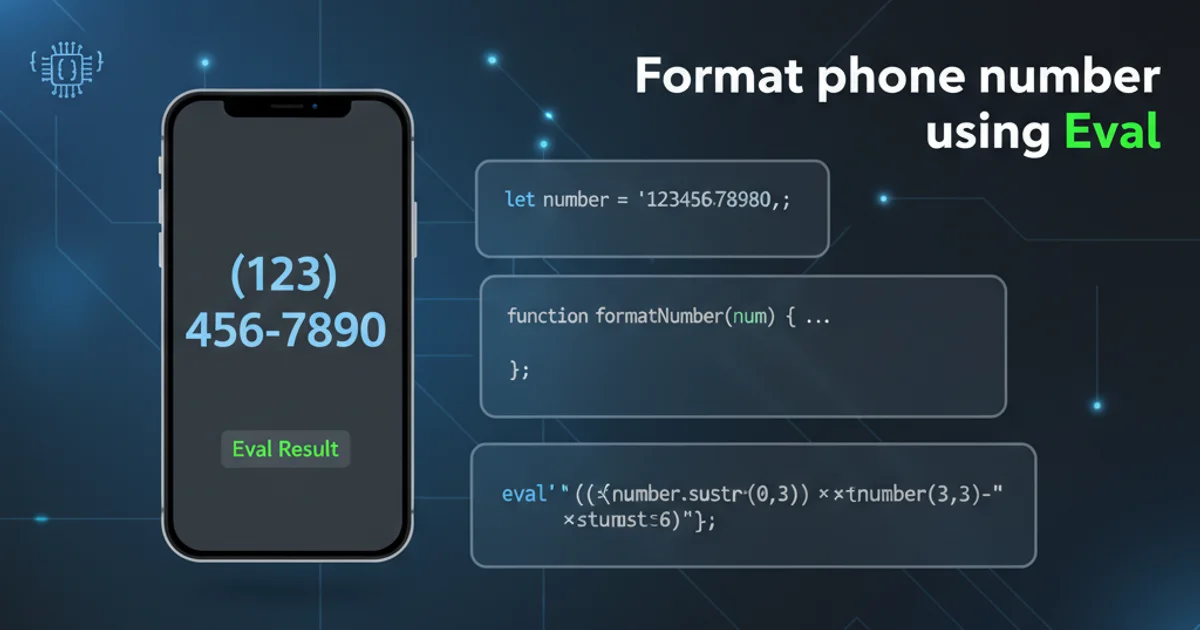How to verify an attribute is present in an element using Selenium WebDriver?
Categories:
Verifying Attribute Presence in Selenium WebDriver

Learn how to effectively check if an HTML element possesses a specific attribute using Selenium WebDriver in Java, enhancing your test automation robustness.
In web automation testing with Selenium WebDriver, it's often crucial to verify not just the presence of an element, but also the presence of specific attributes within that element. Attributes provide valuable information about an element's state, behavior, or styling. This article will guide you through various methods to reliably check for an attribute's existence using Java and Selenium WebDriver.
Understanding Element Attributes
HTML elements are defined by tags and can have various attributes that provide additional information. For example, an <img> tag might have src and alt attributes, while an <input> tag could have type, value, or placeholder attributes. Verifying the presence of these attributes is essential for ensuring that elements are rendered correctly and behave as expected.
graph TD
A[Start Test] --> B{Locate WebElement}
B --> C{Attempt to Get Attribute}
C --> D{Check Return Value}
D -- "Not null or empty" --> E[Attribute Present]
D -- "Null or empty" --> F[Attribute Not Present]
E --> G[Continue Test]
F --> H[Fail Test / Handle]
G --> I[End Test]
H --> IFlowchart for verifying attribute presence
Method 1: Using getAttribute() and Checking for null
The most straightforward way to check for an attribute's presence is by using the getAttribute() method. This method returns the value of the specified attribute. If the attribute is not present, it typically returns null for most attributes, or an empty string for boolean attributes like checked or disabled when they are not set. Therefore, you need to check for both null and an empty string.
import org.openqa.selenium.By;
import org.openqa.selenium.WebDriver;
import org.openqa.selenium.WebElement;
import org.openqa.selenium.chrome.ChromeDriver;
public class AttributePresenceCheck {
public static void main(String[] args) {
System.setProperty("webdriver.chrome.driver", "path/to/chromedriver");
WebDriver driver = new ChromeDriver();
driver.get("https://www.example.com"); // Replace with your URL
WebElement element = driver.findElement(By.id("myElement")); // Locate your element
String attributeValue = element.getAttribute("data-test-id");
if (attributeValue != null && !attributeValue.isEmpty()) {
System.out.println("Attribute 'data-test-id' is present with value: " + attributeValue);
} else {
System.out.println("Attribute 'data-test-id' is NOT present.");
}
// Example for a boolean attribute like 'disabled'
WebElement disabledInput = driver.findElement(By.id("disabledInput"));
String disabledAttribute = disabledInput.getAttribute("disabled");
if (disabledAttribute != null && !disabledAttribute.isEmpty()) {
System.out.println("Attribute 'disabled' is present.");
} else {
System.out.println("Attribute 'disabled' is NOT present.");
}
driver.quit();
}
}
Checking for attribute presence using getAttribute()
checked, selected, disabled), getAttribute() will return "true" if present and set, or null if not present. However, some browsers might return an empty string "" if the attribute is present but has no value (e.g., <input disabled>). Always check for both null and isEmpty() for robustness.Method 2: Using JavaScript Executor
For more complex scenarios or when getAttribute() doesn't behave as expected across different browsers (though this is rare for standard attributes), you can leverage JavaScript Executor. This allows you to directly query the DOM using JavaScript, which often provides a more consistent result.
import org.openqa.selenium.By;
import org.openqa.selenium.WebDriver;
import org.openqa.selenium.WebElement;
import org.openqa.selenium.chrome.ChromeDriver;
import org.openqa.selenium.JavascriptExecutor;
public class AttributePresenceWithJS {
public static void main(String[] args) {
System.setProperty("webdriver.chrome.driver", "path/to/chromedriver");
WebDriver driver = new ChromeDriver();
driver.get("https://www.example.com"); // Replace with your URL
WebElement element = driver.findElement(By.id("myElement"));
JavascriptExecutor js = (JavascriptExecutor) driver;
// Check if attribute exists
Boolean hasAttribute = (Boolean) js.executeScript("return arguments[0].hasAttribute(arguments[1]);", element, "data-test-id");
if (hasAttribute) {
System.out.println("Attribute 'data-test-id' is present (via JS).");
} else {
System.out.println("Attribute 'data-test-id' is NOT present (via JS).");
}
// You can also get the attribute value directly
String attributeValueJS = (String) js.executeScript("return arguments[0].getAttribute(arguments[1]);", element, "data-test-id");
if (attributeValueJS != null && !attributeValueJS.isEmpty()) {
System.out.println("Attribute 'data-test-id' value (via JS): " + attributeValueJS);
}
driver.quit();
}
}
Verifying attribute presence using JavaScript Executor
hasAttribute() JavaScript method is very precise; it returns true if the attribute exists on the element, and false otherwise, regardless of its value. This can be particularly useful for boolean attributes where getAttribute() might return an empty string.Best Practices and Considerations
When verifying attribute presence, keep the following in mind:
- Specificity: Ensure your element locator is specific enough to target the correct element. Using IDs is generally the most reliable.
- Timing: Attributes might be added or removed dynamically by JavaScript. Ensure you wait for the element and its attributes to be in the desired state before attempting to verify them. Use
WebDriverWaitwith expected conditions. - Browser Differences: While
getAttribute()is largely consistent, subtle differences can exist. If you encounter inconsistencies, JavaScript Executor often provides a more unified approach. - Error Handling: Wrap your attribute checks in
try-catchblocks if there's a possibility the element itself might not be present, to preventNoSuchElementException.

WebDriver interacts with the browser's DOM to retrieve attribute information.
1. Set up WebDriver
Initialize your WebDriver instance (e.g., ChromeDriver, FirefoxDriver) and navigate to the target URL.
2. Locate the WebElement
Use appropriate By locators (ID, CSS Selector, XPath) to find the specific HTML element you want to inspect.
3. Choose Verification Method
Decide whether to use element.getAttribute("attributeName") or JavascriptExecutor based on your needs and desired precision.
4. Implement Logic
Write conditional logic (if-else) to check the return value of your chosen method. For getAttribute(), check for null and isEmpty(). For JavaScript hasAttribute(), check the boolean return.
5. Handle Results
Based on the verification result, either proceed with your test or report a failure, providing clear messages.
6. Clean Up
Always call driver.quit() at the end of your test to close the browser and free up resources.